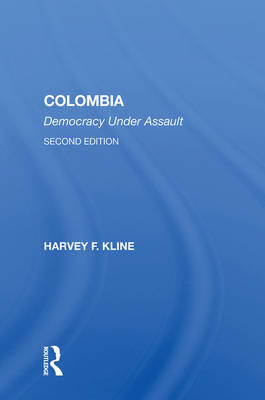
- Afhalen na 1 uur in een winkel met voorraad
- Gratis thuislevering in België vanaf € 30
- Ruim aanbod met 7 miljoen producten
- Afhalen na 1 uur in een winkel met voorraad
- Gratis thuislevering in België vanaf € 30
- Ruim aanbod met 7 miljoen producten
Zoeken
€ 195,95
+ 391 punten
Uitvoering
Omschrijving
Although Colombia is the third-largest country in Latin America, it has been little known until recent years and does not fit many of the patterns common to other countries in the region. Competition between political parties, for example, has always been more important than class conflict; there is no tradition of military dictatorship; and corporatist structures are weak. Over the past decade, however, Colombia has gained notoriety, principally as the supplier of 80 percent of the cocaine consumed in the United States. The second edition of this comprehensive country profile begins with a discussion of the blend of Andean and Caribbean characteristics that define Colombia, particularly in its geography, demography, and social structure. The author then presents a detailed political history that extends from before the arrival of the Spanish, including a portrait of early Amerindian populations, and continues through the turbulence of guerrilla, drug, and paramilitary violence in the 1980s and constitutional reforms of the 1990s. Harvey Kline argues that Colombia is now conscientiously attempting to alter historical patterns that have led it to play a key role in the international drug trade and to lead the world in the rate of homicides. A chapter on the economy offers a historical analysis of its evolution and examines economic and trade policies of recent presidents. Finally, the author looks at the international dimension of Colombian politics, especially its long-standing relationship with the United States and its increasingly important regional ties.
Specificaties
Betrokkenen
- Auteur(s):
- Uitgeverij:
Inhoud
- Aantal bladzijden:
- 176
- Taal:
- Engels
Eigenschappen
- Productcode (EAN):
- 9780367003968
- Verschijningsdatum:
- 7/06/2019
- Uitvoering:
- Hardcover
- Formaat:
- Genaaid
- Afmetingen:
- 152 mm x 229 mm
- Gewicht:
- 489 g

Alleen bij Standaard Boekhandel
+ 391 punten op je klantenkaart van Standaard Boekhandel
Beoordelingen
We publiceren alleen reviews die voldoen aan de voorwaarden voor reviews. Bekijk onze voorwaarden voor reviews.











